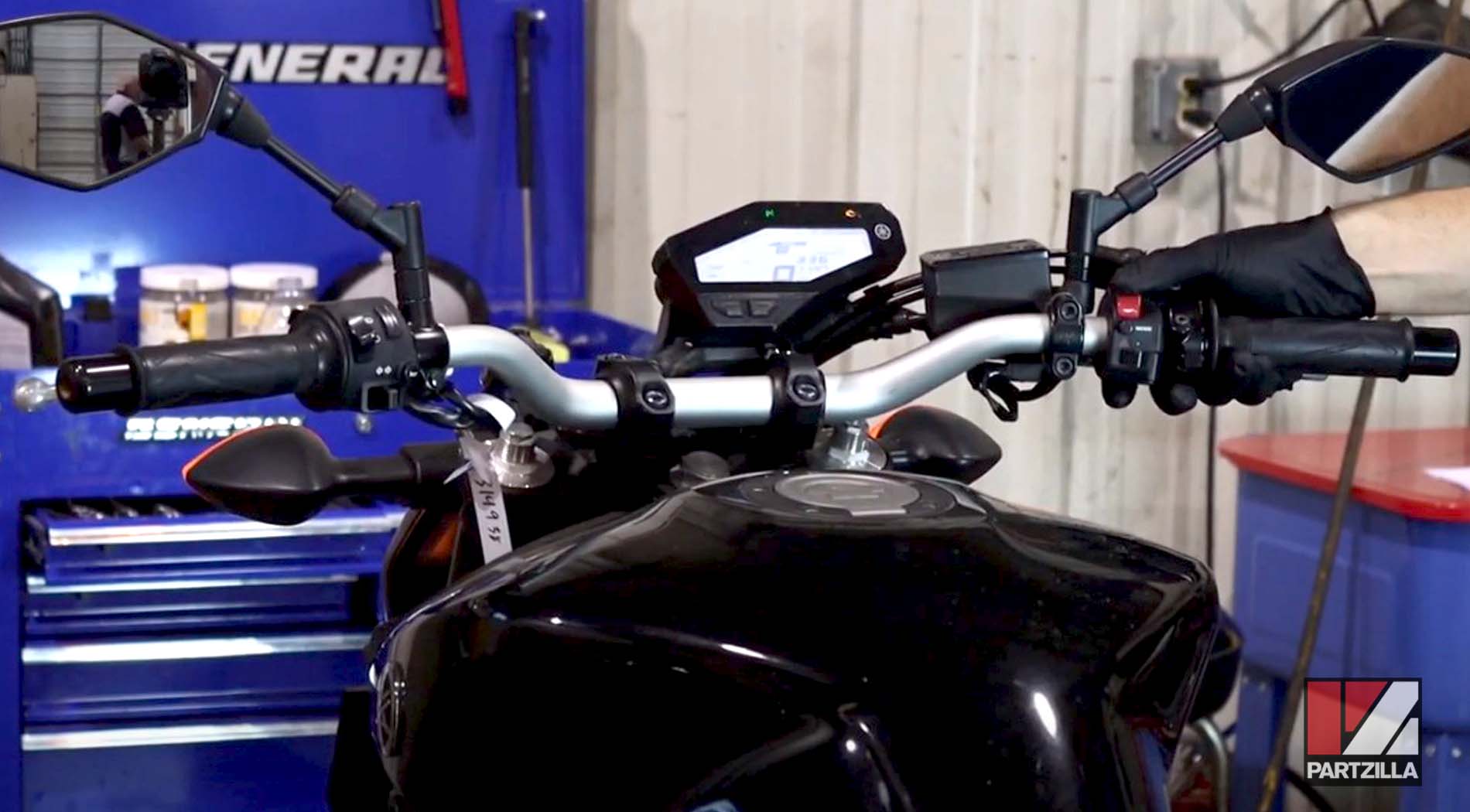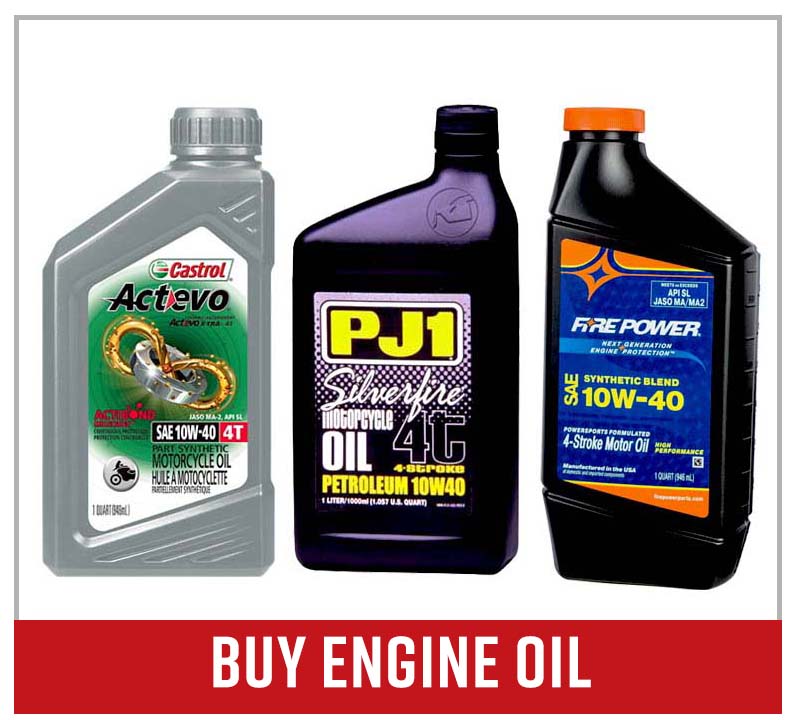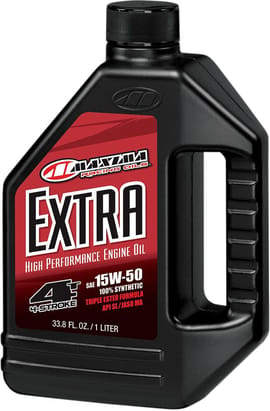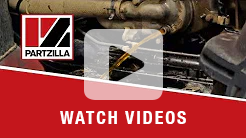Common Motorcycle Engine Failure Causes
A lack of routine maintenance is the most common cause of a motorcycle engine blowing up. Simple stuff like not changing the oil or neglecting the air filter can kill an engine.

In other words, most motorcycle engine failures are very much preventable with a little TLC. Here are the most common causes for a motorcycle engine blowing up or failing.
Dirty or Insufficient Engine Oil
Engine oil provides vital lubrication and cooling to hundreds of moving parts. It reduces friction, stress and excessive heat as the parts rub together.

The oil also absorbs some of the heat from those parts, further protecting them from failure. However, engine oil gets dirty and breaks down over time, reducing its ability to lubricate parts and absorb heat. A lack of oil in the engine also creates friction that quickly overheats the moving parts.
Typical failures when the engine oil is either dirty or depleted include broken connecting rods and connecting rod bearings, and crankshaft bearing failure due to the engine repeatedly running too hot. Seized pistons can also be the product of an engine running excessively hot, to the point the piston expands and becomes stuck within the cylinder.

A quick glance at the spyglass or dipstick before every ride tells you whether there’s enough oil in the engine. The color of the oil also tells you whether it needs to be changed. Engine oil should be a clear golden color, so change it (and the oil filter) out if it’s dark brown or black.
The owner’s manual tells you how often the engine oil should be changed, but it’s just a recommendation. To keep your bike in peak condition, change the oil more often than recommended, especially on dirt bikes.
Dirty Air Filter
The air filter is the front line of defense against contaminants getting into the engine, so if it gets clogged or tears, it won’t protect the motor effectively.

Dirt in the engine wears out the piston rings and cylinder lining, and contaminates the engine oil to the point of making it less effective at lubricating and cooling parts.
Inspect and clean or replace the air filter regularly. Check the air filter at least once a week, and after every ride for offroad bikes. Your bike’s owner’s manual tells you how often the filter should be replaced, but again, it’s just a recommendation and you need to change it more often if you ride in harsh conditions.
Lack of Coolant
The motorcycle’s cooling system ensures the engine runs within specific temperatures, but the coolant in the system loses its effectiveness over time.

Dirty or insufficient coolant in the system leads to the same engine failures mentioned above about engine oil. Check the engine’s coolant level and top it off if necessary. Replace old coolant as specified in the owner’s manual or even more frequently if you work your bike hard. Look for leaks around coolant hoses, radiators and water pump covers, and keep the radiator fins clean.
Redlining the RPM
A motorcycle engine at full RPM may spin at speeds that are far too heavy in movement for the internal parts to sustain.

Your bike may be designed to occasionally reach its RPM redline, but constantly keeping it there causes severe wear to parts such as valves, bearings and cam chains. It also increases the danger of the engine exceeding its maximum RPM. This causes the valves to float from moving too fast to fully close before they have to open again. Ride within the bike’s limits to prevent redlining the engine too often, and keep in mind that jumps can lead to over-revving.
Typical failures when the engine runs at the RPM redline too often include bent or snapped valves caused by floating, which may lead to the valves coming into contact with and damaging the piston head.
Incorrect Valve Clearances
The repeated opening and closing of the valves eventually leads to the valve clearances becoming too large or too small. Typical failures when the valve clearance is incorrect include bent or snapped valves, and damaged camshaft lobes caused by the valves slapping the lobes because the valve gap is too large.
Offset Timing
The timing cam and timing chain keep everything in sync, but the chain stretches as it wears, which offsets the timing.
Moving parts within the engine need to move at precision timing. So if the timing chain jumps a tooth on the camshaft, the timing will offset. When that happens, the engine’s parts no longer move in sync and can come into contact with one another. Typical failures when the timing is offset include bent or snapped valves, and a damaged piston head from the valves coming into contact with the piston head.
Additional Prevention Tips
Warm up the engine before every ride by letting the engine idle up to full operating temperature. Doing so also warms the oil, which helps it flow and lubricate better.

Pay attention to the engine while riding. Listen for unusual sounds and feel out whether the engine is performing as it should. If you feel the motor isn’t accelerating properly or is dragging off-throttle, shut it off to avoid a potential failure. Also, the less stress you put on the engine, the less likely it is to fail. So if the bike’s rated to carry 300 pounds including the rider, don’t overload it.
Service your motorcycle per the manufacturer’s recommendations as a bare minimum, but also more frequently if you ride often and hard. And again, check that valve clearances are accurate and that the timing is set correctly. Finally, inspect the spark plugs and replace them if necessary.







